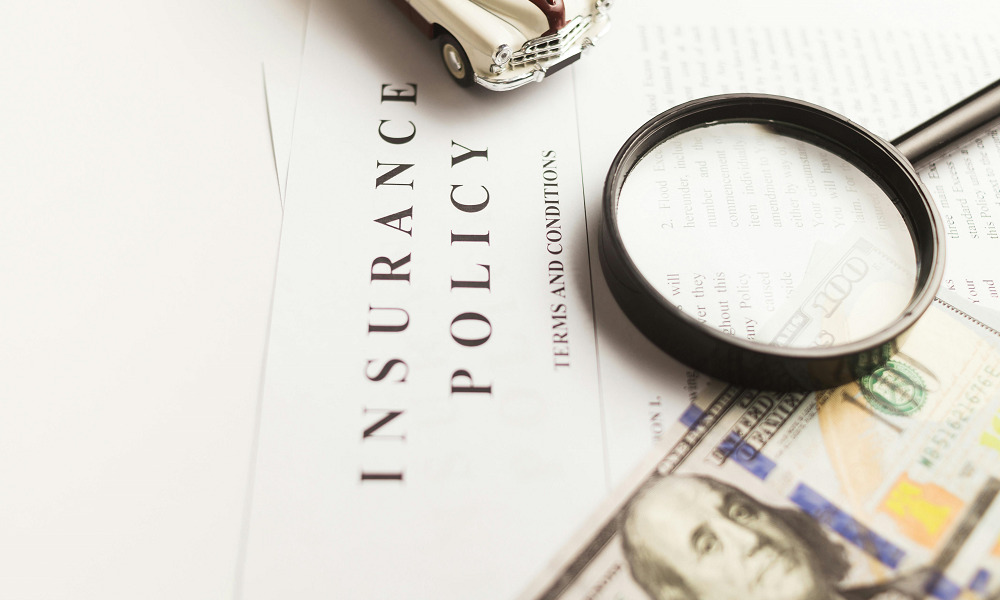Business
What Determines Life Insurance Costs? A Breakdown of Key Factors

Reviewing the different aspects that affect life insurance premium costs enables people to select the most appropriate policy coverage. The expense of life insurance premiums demonstrates high variability according to multiple decisive elements. Knowledge about life insurance cost drivers enables people to pick suitable policies which fulfill their needs without requiring excessive long-term expenditures. This section analyzes what determines the expense of life insurance coverage.
1. Age: The Younger, The Better
The age of the policyholder stands as the foremost determiner of what premiums people need to pay for their life insurance. The cost of life insurance premiums decreases when you buy insurance at a younger age. Statistics show that younger people experience lower risks of deadly health problems while possessing extended life spans.
Someone who gets a 20-year term policy at age 30 will have reduced premiums when compared to getting the policy at age 50. With higher age-related healthcare risks insurers need to increase policy premiums because they estimate increased mortality probabilities in customers.
2. Health: A Key Determinant of Premiums
The condition of health shapes the final cost price of life insurance policies. Insurance companies perform health evaluations to understand risk patterns of individuals. Health insurance providers charge lower premiums to those who have good health status because this indicates a reduced risk of premature death.
The need to purchase life insurance should occur during good health since rates are more favorable. The expense of life insurance generally becomes much higher for individuals dealing with health conditions like high blood pressure along with diabetes through cancer-related history. Your present health status affects your capability to secure insurance coverage and sometimes prevents you from obtaining it altogether.
Regular exercise combined with nutritional choices alongside abstinence from smoking and heavy alcohol use enables people to achieve the most favorable life insurance rates. People who already have health conditions should treat their medical challenges ahead of insurance application to raise their chances at getting better rates.
3. Smoking: A High-Cost Habit
Smoking stands as one of the life factors that impact life insurance premiums the most. Insurance companies classify tobacco users as high-risk because they have established various health risks connected to smoking. Smokers must pay heavily increased premiums than individuals who do not smoke.
Quitting smoking allows smokers to gain access to discounted premiums from their life insurance provider. The insurance company grants non-smoker prices after you maintain a tobacco-free lifestyle during a designated time of one to two years. Employees should establish healthy routines because these changes accomplish two goals: enhancing personal wellbeing and decreasing their life insurance premiums.
4. Occupation and Hobbies: What Do You Do for a Living?
Earning your living through specific occupations directly impacts the amount of premiums you will need to pay. Workers facing high occupational hazard in jobs like construction and mining and firefighting encounter increased risks of injuries which drives up their insurance premium costs.
life insurance cost become higher when you participate in particular activities that match certain behaviors. Insurers charge increased premiums to customers who participate in skydiving, scuba diving, racing and related high-risk activities because these behaviors classify them as insurance risks. People with occupations or leisure activities that display low risk levels obtain lower insurance rates respectively.
5. Coverage Amount: Bigger Isn’t Always Better
Your selected life insurance coverage determines how much you will pay for premiums. Greater amounts of selected coverage will automatically lead insurance providers to raise your premium rates. The first step to decide insurance coverage should start with your personal financial requirements.
The death benefit amount selected by someone with children would be higher because they want to provide financial security to their dependents after their death. Someone with limited financial duties typically selects a smaller insurance coverage compared to those with substantial responsibilities. Overestimating your needs can result in unnecessarily high premiums, while underestimating your needs may leave your family financially vulnerable.
6. Policy Type: Term vs. Permanent Life Insurance
The type of life insurance policy you choose also plays a significant role in determining life insurance cost. There are primarily two types of life insurance: term life and permanent life insurance (which includes whole life and universal life insurance).
- Term Life Insurance: This is often the more affordable option because it provides coverage for a specific period (usually 10, 20, or 30 years) without any cash value accumulation. Term life insurance is pure protection, and once the term ends, coverage expires. Because it doesn’t involve an investment component, term life insurance typically has lower premiums compared to permanent life insurance.
- Permanent Life Insurance: Permanent policies provide lifelong coverage and include a cash value component that grows over time. This feature makes permanent life insurance more expensive than term life, as you’re paying not only for the death benefit but also for the investment portion of the policy.
While term life insurance tends to be more affordable, it’s important to assess whether you need lifelong coverage or just a temporary financial safety net before deciding on the policy type.
7. Gender: Women Often Pay Lower Premiums
Gender can also influence life insurance costs. Statistically, women tend to live longer than men, which means that insurance companies often charge lower premiums for women. This is due to the lower risk of mortality over a woman’s lifetime. Men, on the other hand, typically have higher rates, as their average life expectancy is shorter, and they are generally more prone to certain health conditions earlier in life.
While gender-based pricing is common, it’s worth noting that some regions or countries may have laws that prevent insurers from using gender as a factor in pricing policies.
8. Family History: The Impact of Genetics
A family history of certain illnesses, such as cancer, heart disease, or diabetes, can influence life insurance costs. Insurers often look at your family medical history to gauge your risk level for certain health conditions. If your parents or siblings have a history of serious health issues, the insurer may consider you at a higher risk and charge higher premiums.
On the other hand, a clean bill of health in your family history can help keep premiums lower. However, it’s important to remember that insurance companies weigh several other factors, and one’s family medical history is just one piece of the puzzle.
9. Waiting Until the Last Minute: A Costly Mistake
A common mistake people make is waiting too long to purchase life insurance. As age increases, so does the life insurance cost, with premiums often rising by 8% or more for each year you delay. Waiting until you have dependents or a mortgage may seem like a natural time to secure coverage, but by then, your rates may have already increased significantly due to age or health-related factors.
Purchasing life insurance at a younger age allows you to lock in a lower premium for the entire term of the policy. Even if you don’t yet have children or significant debts, securing life insurance early can provide a financial safety net in the future and help protect loved ones from unexpected costs.
10. How to Lower Your Life Insurance Costs
While some factors influencing life insurance costs are beyond your control, there are steps you can take to reduce premiums. Maintaining a healthy lifestyle, quitting smoking, and purchasing coverage at a younger age can all significantly lower your premiums. Additionally, ensuring that you’re choosing the appropriate coverage amount and term length for your needs will help avoid paying for unnecessary coverage.
It’s also essential to shop around and compare policies from different insurers. Rates can vary widely, and a little research can lead to substantial savings. Consulting with a financial advisor can also help you make the best choice for your personal and financial situation.
Conclusion
The cost of life insurance is influenced by many factors, including age, health, occupation, lifestyle choices, and the type of policy you choose. Understanding these elements can help you make the best decisions to keep costs manageable while ensuring your loved ones are well-protected. By considering these factors and acting early, you can secure life insurance at a more affordable rate, providing peace of mind for both you and your family.

-

 World1 week ago
World1 week agoEthiopian volcano erupts for first time in thousands of years
-

 Health1 day ago
Health1 day ago8 kittens die of H5N1 bird flu in the Netherlands
-

 Legal6 days ago
Legal6 days agoUtah Amber Alert: Jessika Francisco abducted by sex offender in Ogden
-

 US News5 days ago
US News5 days agoExplosion destroys home in Oakland, Maine; at least 1 injured
-

 Health6 days ago
Health6 days agoMexico’s September human bird flu case confirmed as H5N2
-

 Legal3 days ago
Legal3 days ago15 people shot, 4 killed, at birthday party in Stockton, California
-

 World6 days ago
World6 days agoWoman killed, man seriously injured in shark attack on Australia’s NSW coast
-

 Health5 days ago
Health5 days agoMarburg outbreak in Ethiopia rises to 12 cases and 8 deaths




